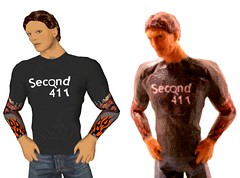I am absolutely enamored with physical representations of virtual objects. We’ve skipped over the marvel that a digital photograph can become a physical print (mainly because the digital photo is a mimic of the physical, down to thinking of photos as single objects and talking about something as nonsensical as “digital filmmaking“), but I love the idea of Fabjectory:

Bring your avatar out of the virtual world and into the real world with Fabjectory’s avatar creation services. We’ll fab a miniature statuette of your avatar that you can take with you anywhere.
Create a digital you, and then have your own action figure statuette made, complete with tattoos and pithy t-shirts. I know a lot of WoW players who would jump on this.
According to their blog, they’ll also let you create a customized USB key case in-game (graphics, logos, textures, legs…whatever) and then create it for you IRL. We’re getting closer and closer to The Diamond Age and drawing things off the Feed. I want me a matter compiler!
This is roughly related to my adoration of the new Moo Flickr cards…it somehow makes your photos both weightier and more desireable. These little things are awesome…you want to share them, but you want to keep them all for yourself. I ordered the free sample of 10 cards, and immediately ordered 100 when I got them…they are that cool. My next plan is to take a picture of my Moo cards, upload that to Flickr, and have cards made from it…how many cycles of Meta-Moo can you go?

